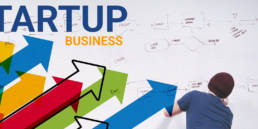12 Tips and Tricks to help you avoid the pitfalls of your first WordPress website design
So you’re installing a WordPress site
Many who are new to WordPress have heard that it is pretty easy to set up. On the surface you just install the software on your server and start building you pages. But that’s not really the case, it starts out easy then the learning curve gets steep really fast. Setting up a Theme and installing plugins can be confusing and without some guidance from an experienced WordPress developer you can spend hours and days rooting out the evil.
I wanted to see if I could give you all a few pointers that I have learned over 12 years of building WordPress sites. These are the tips and tricks of the WordPress install.
1. Always, always, always… read the instructions. A good theme will come with a bundled read me guide either as a PDF or as Text file. Pull that out and grab a cup-o-jo and read everything first before you install anything. This is not an Ikea piece of furniture here, if you miss putting all the bolts and screws in you can really screw yourself, excuse the pun. You might even want to go to the Theme developer’s site and see if there is any more recent information to view. Another great resource is to search for a video on the installation of your new Theme and see how it is done.
2. Make sure you install the right .zip file. It’s always a frustrating thing when you first upload a theme to your WordPress installation and it returns an error. Most Themes you purchase come with all of the directions, plugins, and other files all bundled into one large .zip file. Make sure you extract the main .zip and find the right .zip Theme only file and upload that.
3. Don’t start building pages yet! Once you upload your new Theme you’re not finished. You need to activate it in the Customize section of WordPress. Then you need to locate the Theme option section that most themes use to finish the setup. It will become a link in the left navigation of the WordPress CMS. You will need to install and activate all of the Plugins that run the Theme or it will not work as expected. Don’t cut any corners and keep the documentation handy to reference.
4. Jump start your page development by using the Theme Demo content. If you like the demo Theme content there will be a procedure to install the demo content on your site, refer to the Theme documentation again. It’s a good jump start into building pages as the completed template of all pages and assets will be installed. You can browse through them live and chose the ones you like to use for homepage, about page, contact, etc.
5. Take the time to create a content outline ahead of building your website. This is a simple bulleted list of pages you would like to have on your website. It will help you as a guide to gather the content you need to fill each section. Now you will need to gather all of your content before you start building pages, follow your content outline. I like to have everything at my fingertips so as I start building pages and I learn how the Theme builder (Gutenberg Block Builder, WPBakery, Beaver Builder, Divi, Elementor to name a few) works so I can move quickly through the images, text, videos and other assets.
Let the Page Building Begin
6. Posts and Pages…OMG this is pretty confusing to a novice WordPress designer. BLOG posts are the core of WordPress and is the main functionality that made WordPress CMS (Content Management System) so popular when it first was developed in 2003.
Posts
Posts are your blog’s regularly published blog articles. Think of them as “What’s New” updates. There is no limit on the number of posts you can have. Posts appear (or are listed) in reverse chronological order on the blog’s front or home page — the latest post at the very top and the earlier ones beneath it. Posts are also displayed in the blog’s RSS feed. Usually, you can control how many posts are displayed on the blog’s front page through the user dashboard. For WordPress, the URL for a post usually includes the publication date. It is also possible to create a “sticky post” — this means a fixed post that will appear on the front page before all other posts (even newer ones). Posts usually use tags or categories to organize them.
Pages
Pages are “static” articles. Think of them as essays. They are a good way to publish information that doesn’t change much — the “About” page is the classic example. Pages most usually appear in the links (or tabs) across the top of some themes. Pages are not listed or associated with a date (as posts are). They don’t use tags or categories for organization (as posts are). On the free WordPress.com, you can have up to 50 static pages and all of them can be listed at the same time.
7. Now get organized. You should organize your content accordingly so you have your static content in Pages and dynamic dated content in Posts. May times in the past I confused pages with posts and started putting all my content into pages only and not using the posts.
If you build it they will come…NOT
8. You’re not finished yet. Now you have all of your pages built and linked into the website menu. It’s time to optimize your website for search engines. This means setting up keywords, key phrases and descriptions. This needs to be done for every page as the content on the page will be relevant to the search results being indexed by search engines (Google, Bing, Yahoo, Baindu, Ask.com, and more) Some of the most popular plugins used to help your SEO setup are:
- Yoast SEO. Yoast SEOis the best WordPress SEO plugin
- SEMRush. SEMRush is the best overall SEO tool
- Google Search Console
- Ahrefs
- Google Keyword Planner
- All in One SEOPack
- SEOPress
- Rank Math
9. Who is visiting your site? You will now need to install an analytic tool to see your user traffic on your site pages. This will give you some insight into what you are doing right and what you are doing wrong. The most popular tool I use is Google Analytics. You will need to have a Google account and then setup your website URL to be indexed. The procedure can be followed at Google Support
10. You’re still not finished. Social media play a big part in getting your website found. Now a days it is imperative to have multiple channels in social media so having a Facebook page, a LinkedIn page, Instagram, Twitter, etc. broadens your reach to the internet community at large. Make sure to have the Social Media links setup on your Theme. You will find this in the website Theme Options in the WP admin.
Time to take out the garbage
11. Now you need to clean house. What does that mean? Access your Media library and remove all the media, images, video, etc. you are not using as it takes up storage space on your hosting as well as occupies space in the database and slows down your site. Now remove all of the Demo data pages that where installed that you are not using. If you move everything into the trash you can always reinstall them in the future to use as new site page templates. By doing this you are optimizing the site content and not having pages in your site to be indexed by search engines with bad results.
12. Is your site slow? Go test it at Optimizing for speed at Pingdom this will give you a grade and tell you how fast your site pages render on desktop and mobile. I always optimize my sites with WP Fastest Cache and use a CDN like CloudFlare that hosts your images and code for free. This will significantly speed up your site page loads and lowers your user bounce rate.
If you follow these few Tips and Tricks you will have a professional installation and be ready to showcase your BLOG, Business, Organization, Portfolio, or Personal pages on the World Wide Web (Now I’m showing my age, LOL)




